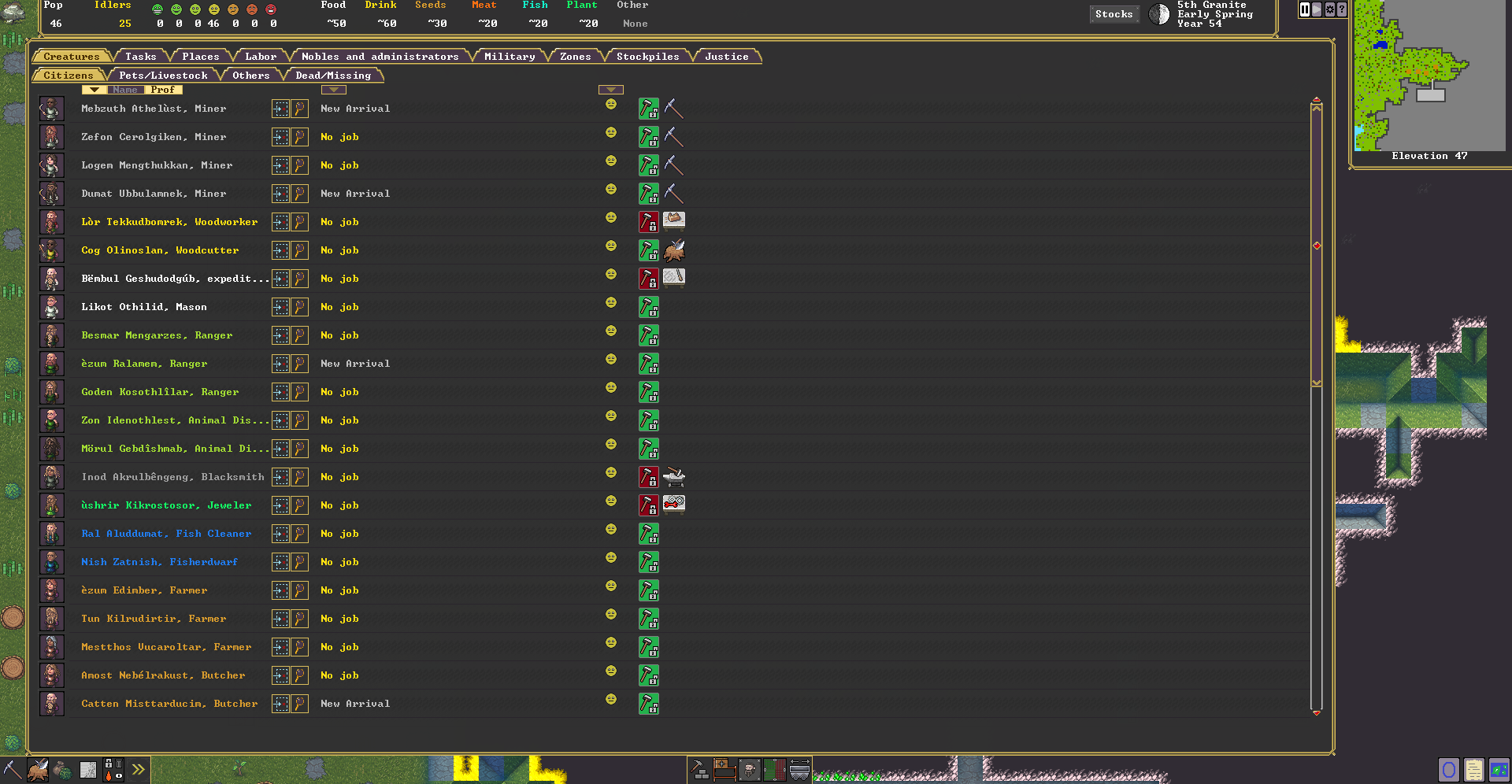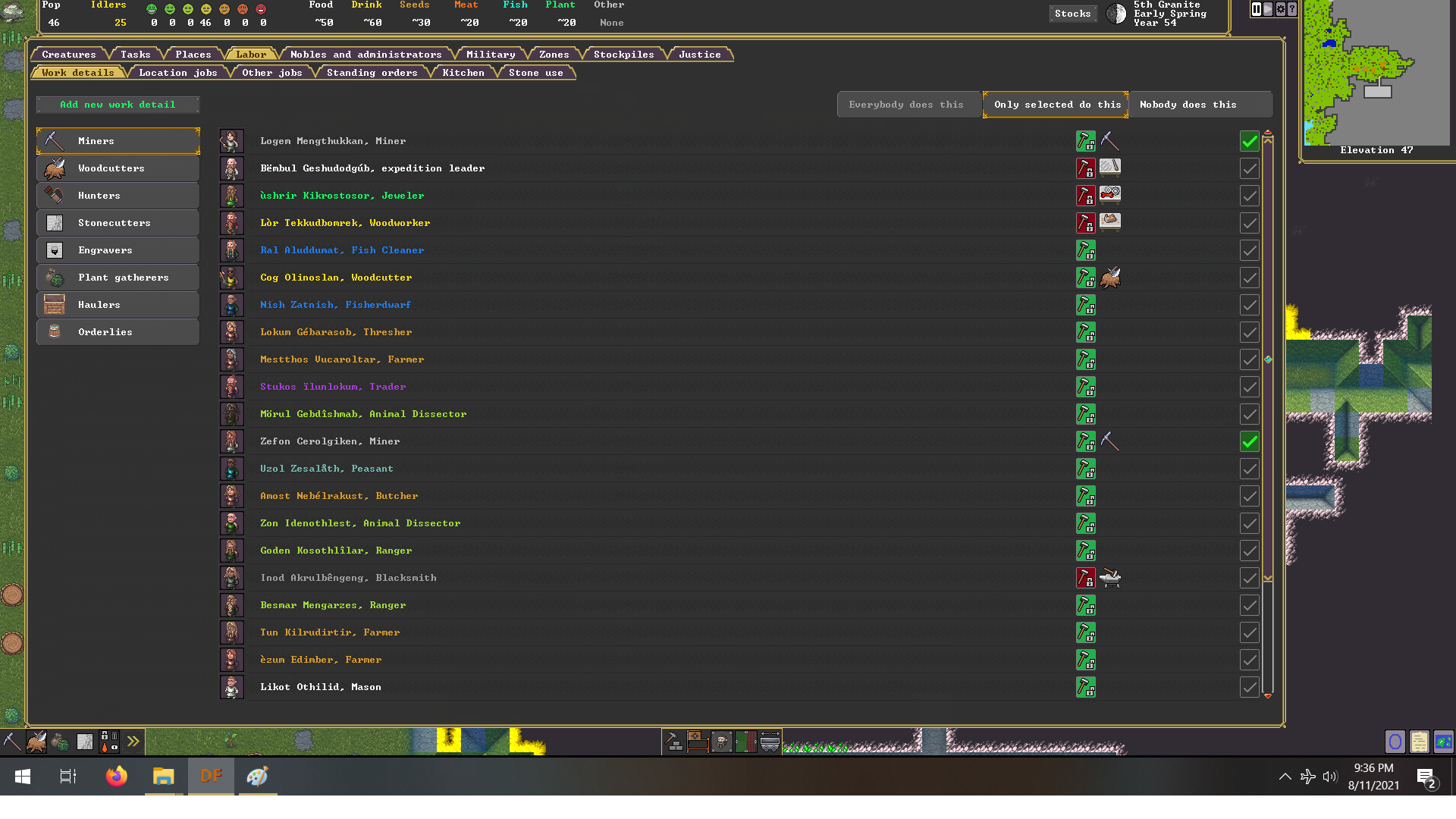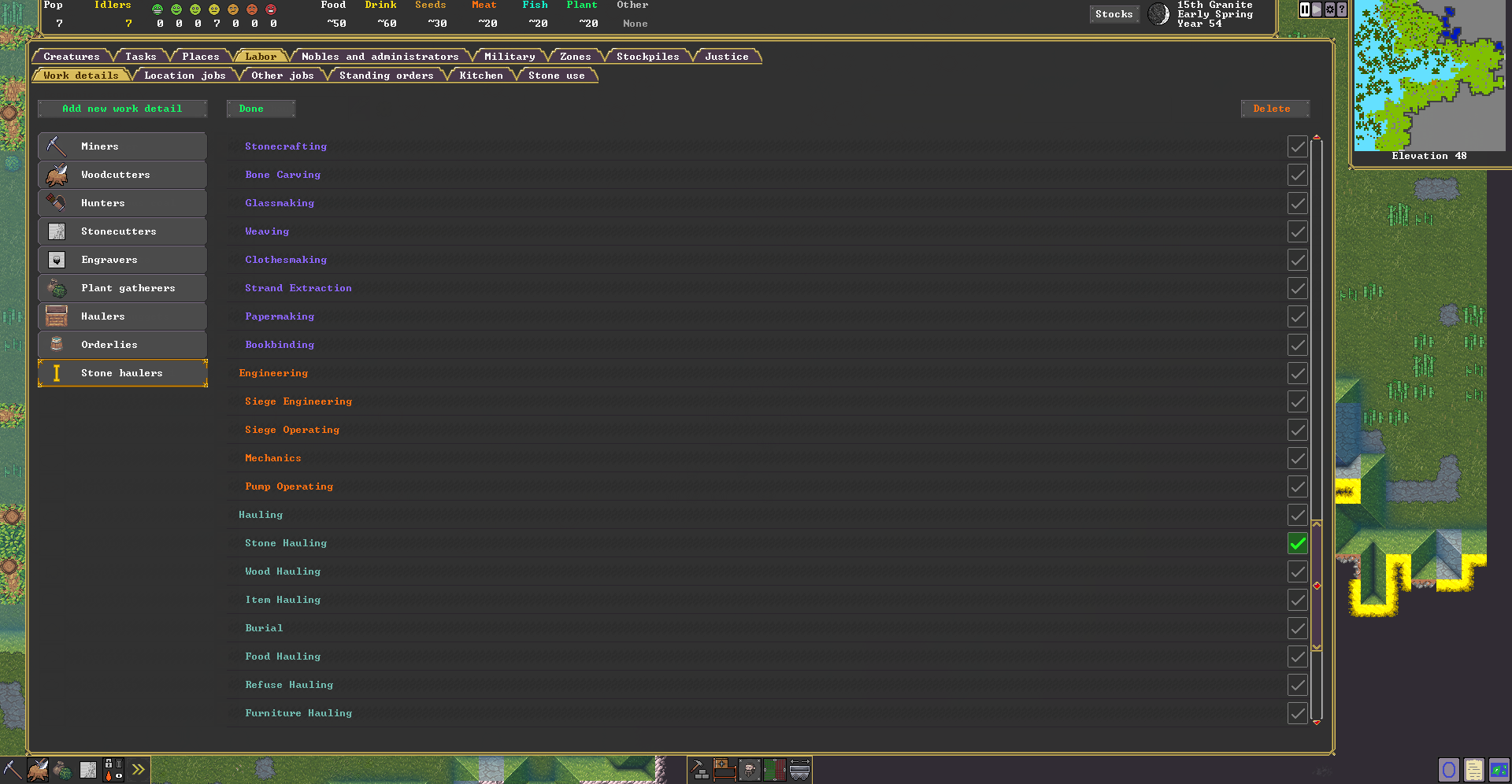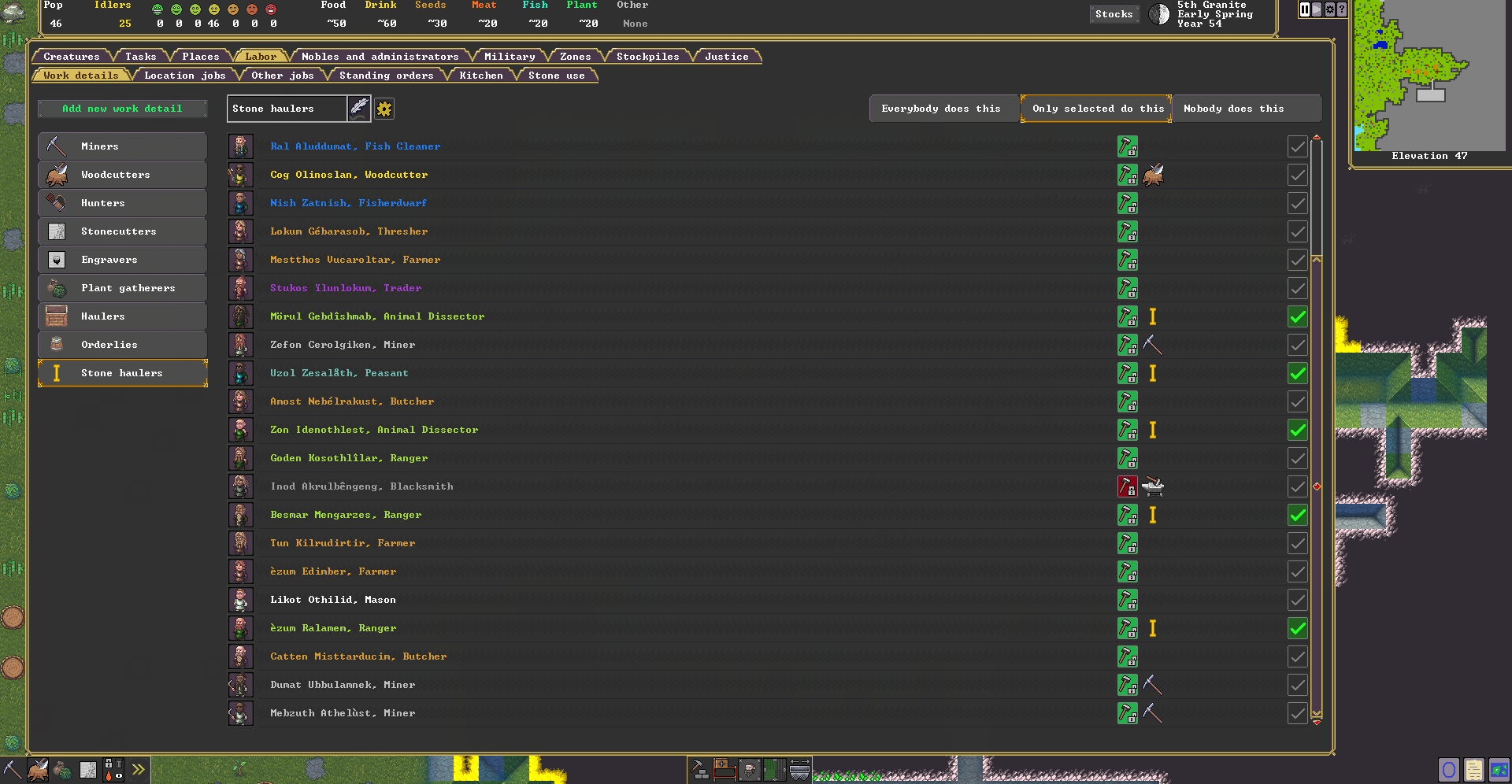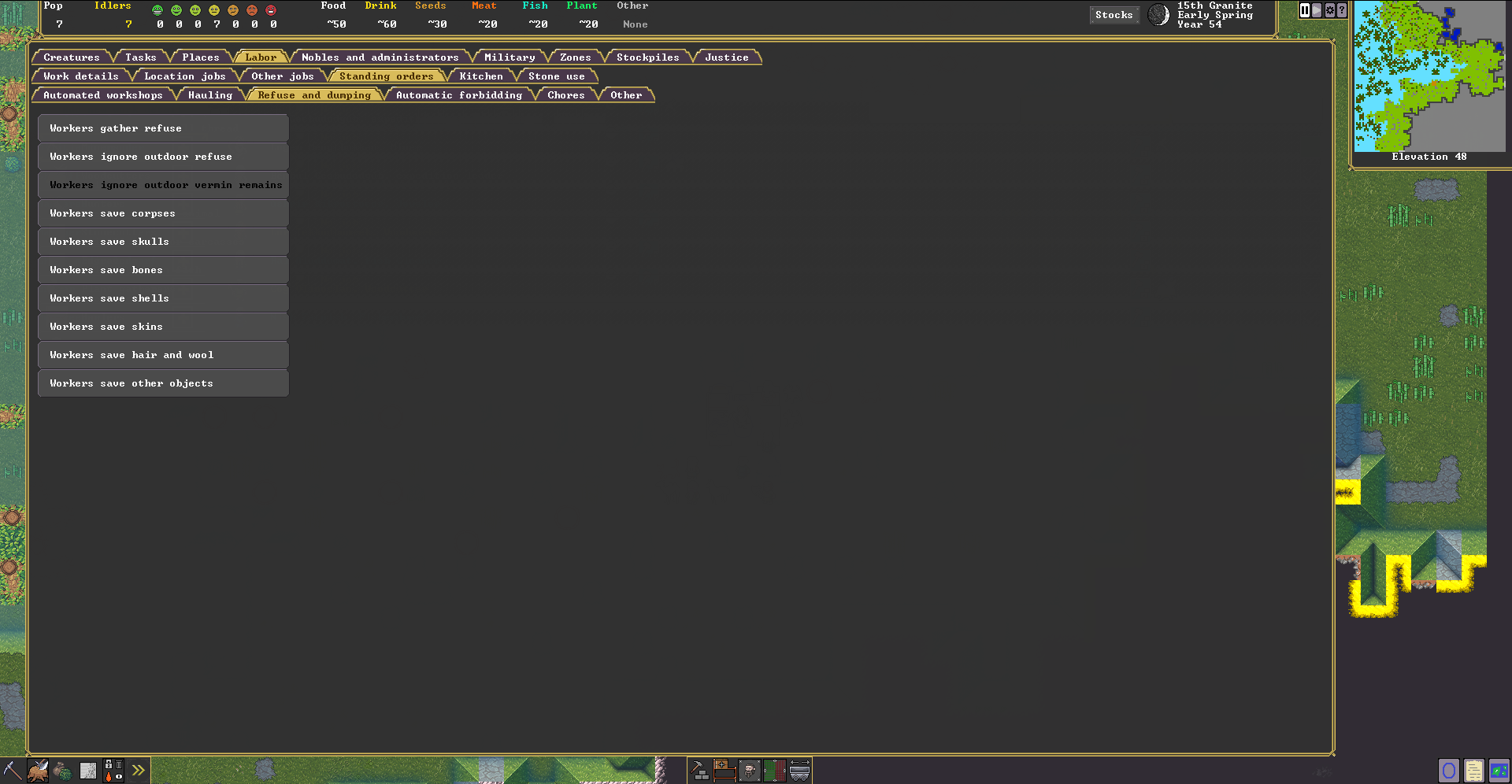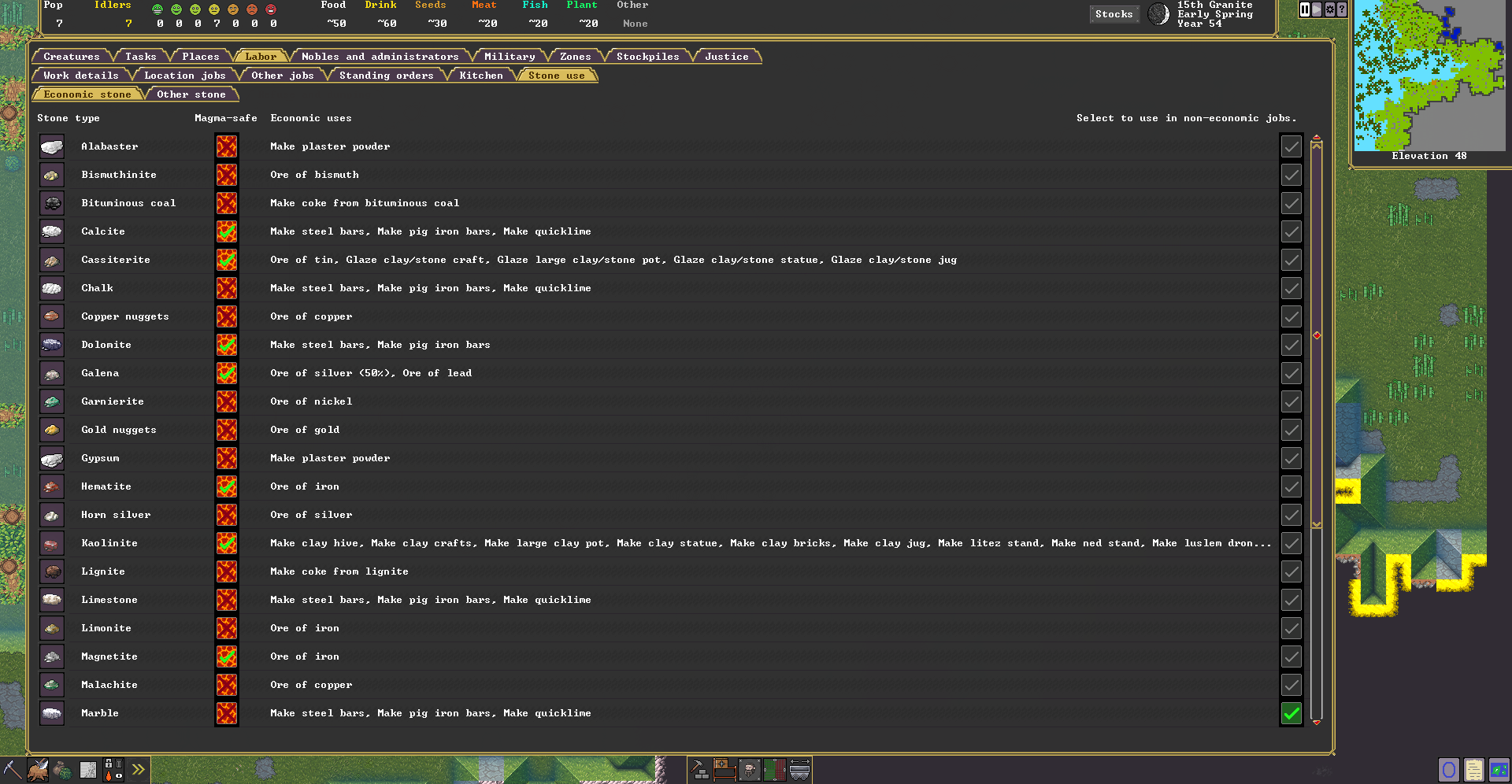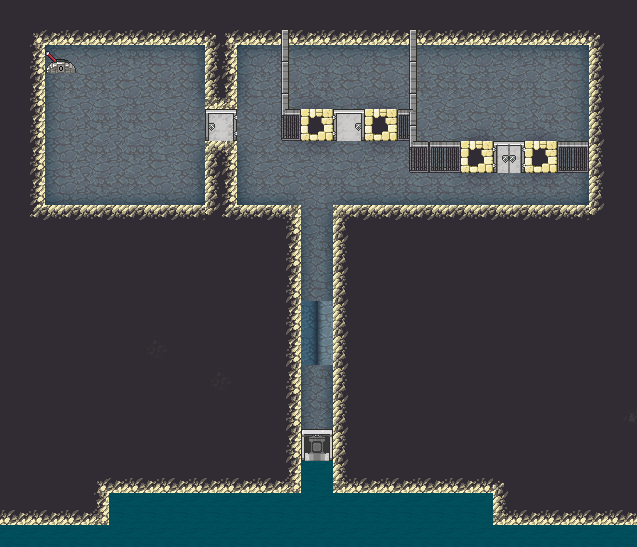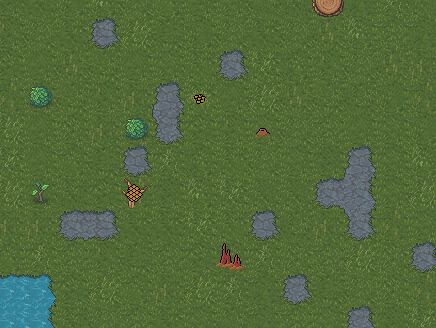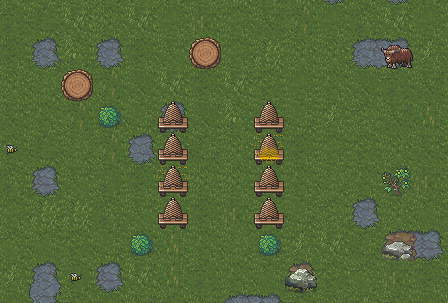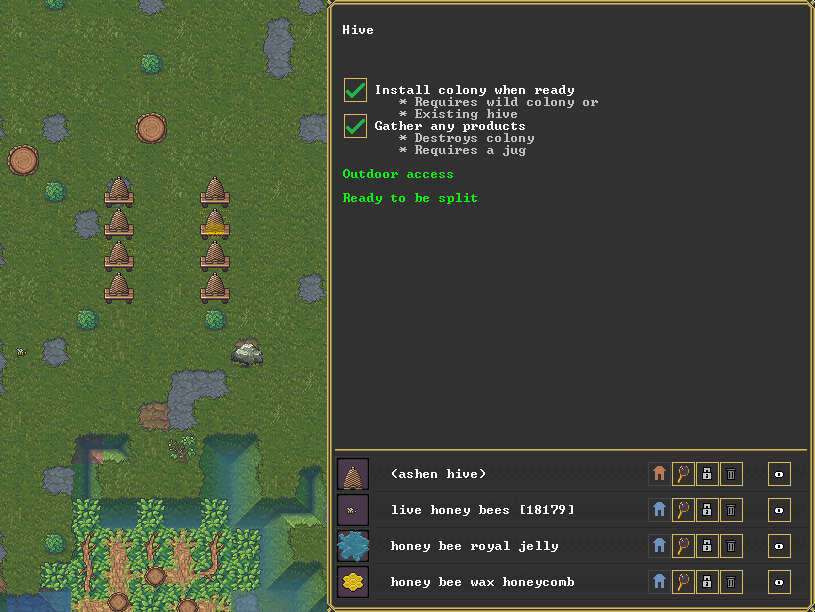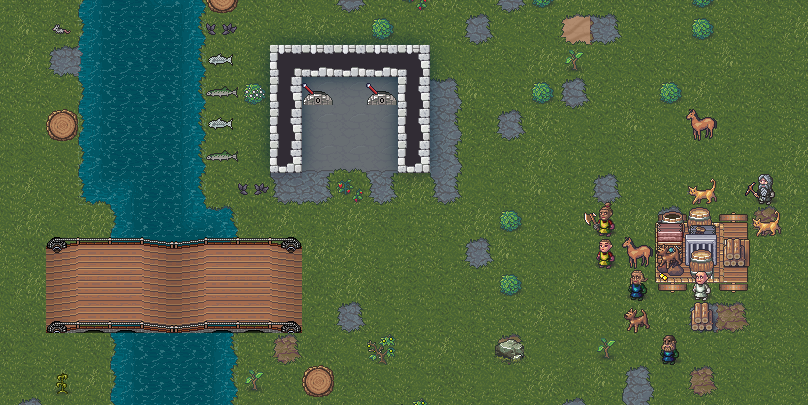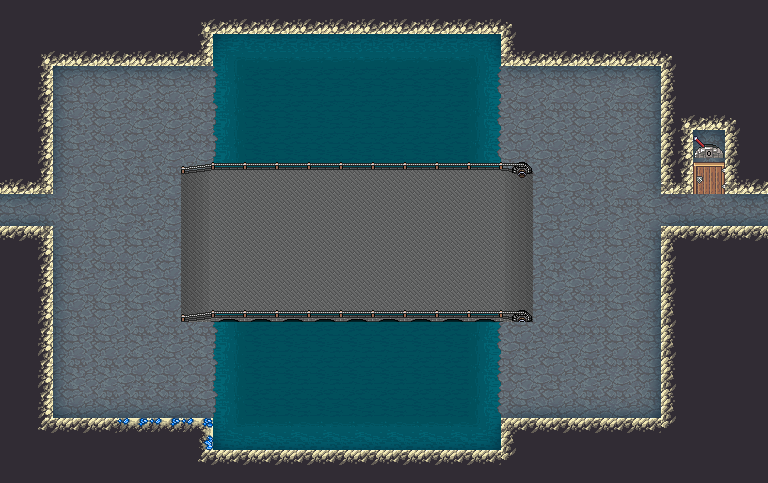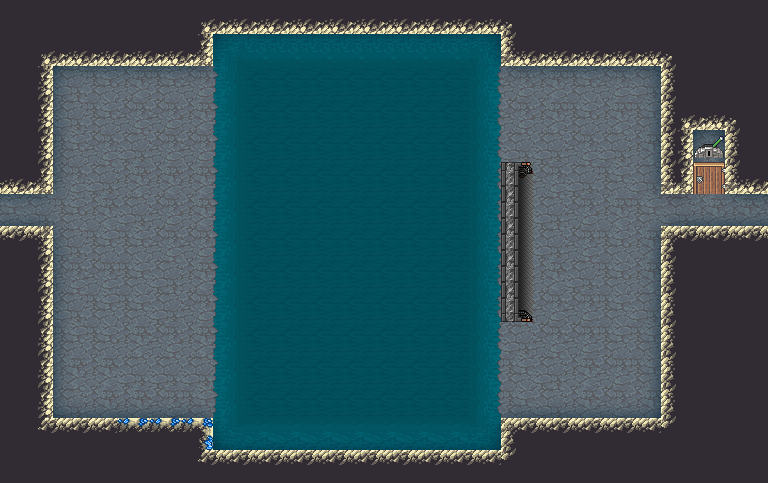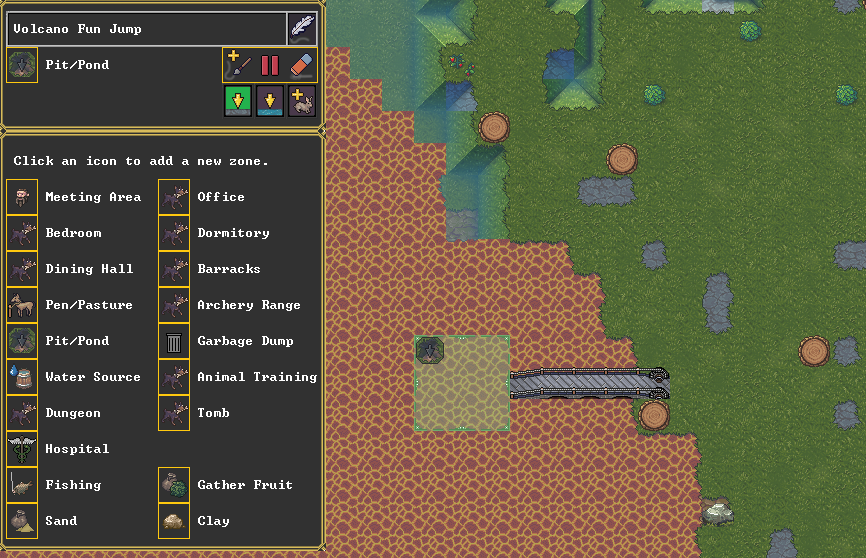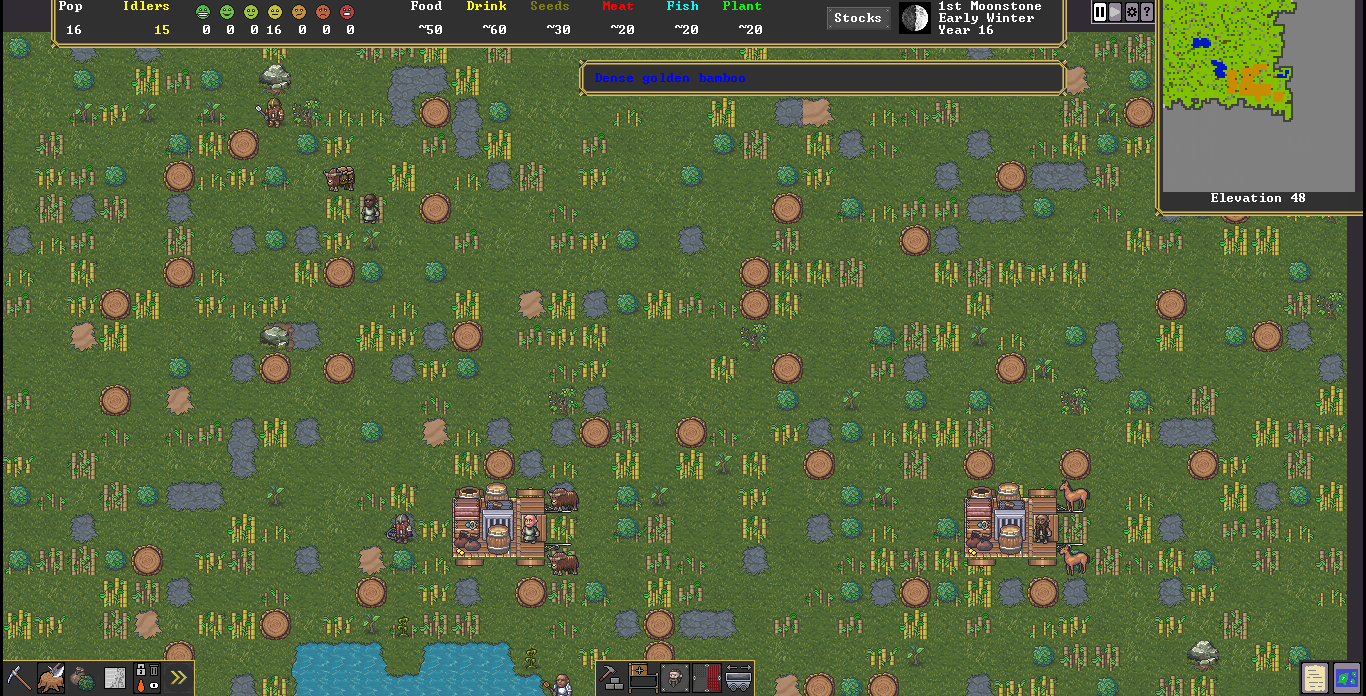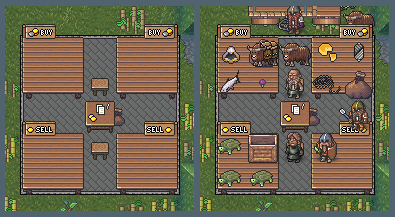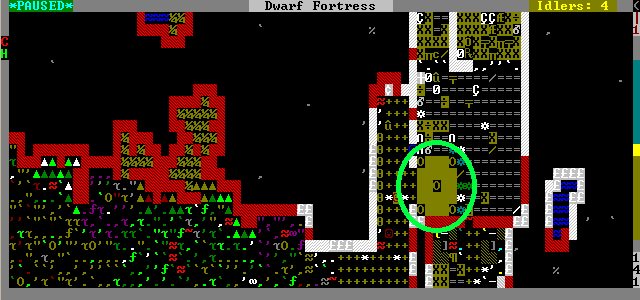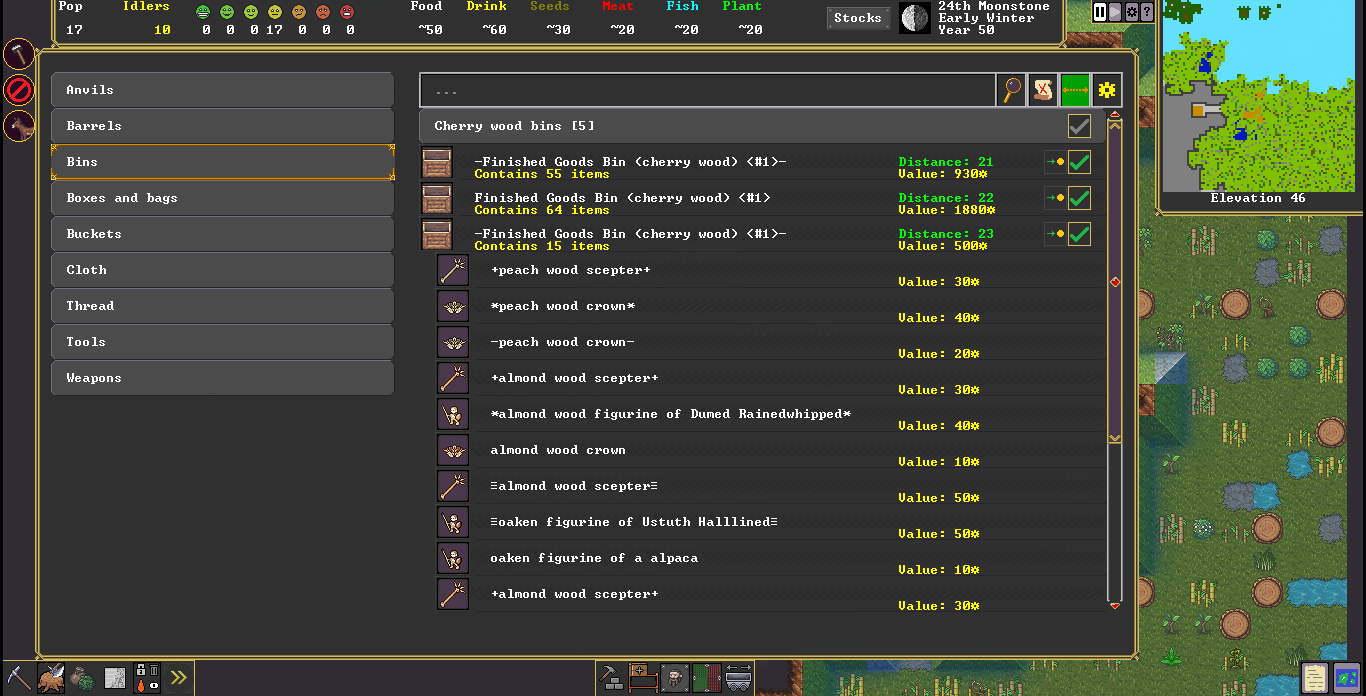
Dwarf Fortress - Not Alex
Hi again!
The game has several special locations that can be given names and which can spread out over several meeting/bedroom/etc. zones, even across different z levels. Dwarves that work in places like this have always had special labor assignments, even before we added the work detail system from the previous news update, and we need to support this in the new interface. Locations also have various other functions we've also supported now.

Traditionally, Dwarf Fortress has had four types of locations you can set up: taverns, temples, libraries, and, more recently, guildhalls. Taverns and libraries allow you to opt-in to more visitors from the outside world, as people come to relax and study. Since, multiple zones like meeting areas and bedrooms can be assigned to a single named location, you can make, for instance, a library which has both a scriptorium and a place for scholars to meet, or you can allow the priests in your temple to have their own private quarters which are still accounted as part of the temple.
In the tavern above, both of these tavern keepers are part-time. The first isn't specialized (the green hammer), so they'll do odd jobs all over the fort. The second is specialized, but they are also assigned to a carpenter's shop. Of course, they have little to do without any goblets! You can set the level of items stocked using the controls there. Most locations need items of different sorts.

Some locations, the temple and guildhall, can be affiliated with organizations in the fortress (and in the case of religions, the entire world.) As their value increases, for instance, you can recognize the priesthood which allows you to assign the fort's priest and then high priest of that religion. The temple in the image has risen from "shrine" to "temple" status, but more migrants that belong to the Creed of Walls need to arrive before a priest can be assigned. Religions are generated during the world historical process, and priests can comfort stressed-out dwarves. Functioning guilds allow dwarves to share their skills in demonstrations.
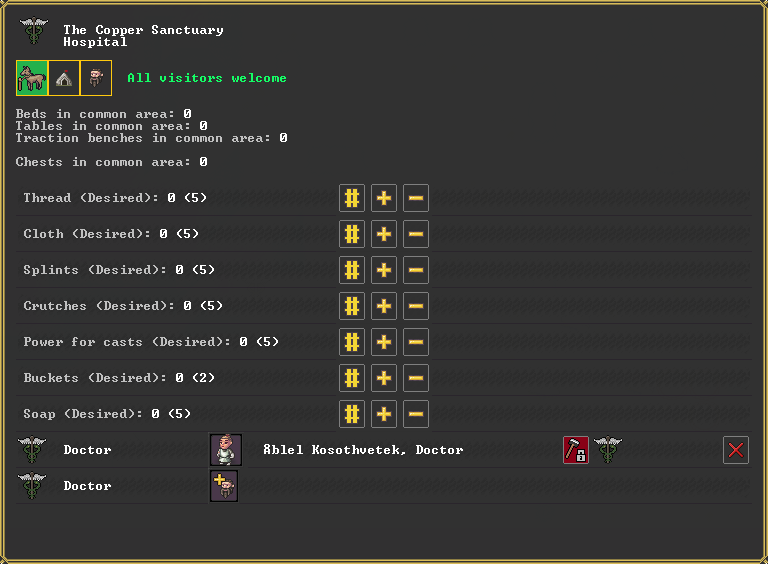
For the Steam release, hospitals have joined the list of multi-zone locations! They were always one of the more involved single-purpose zones, and doctors one of the more complicated professions, so it sped up the interface-making process to just pull them over rather than trying to support their in-between oddness, ha ha. Now you can make big named multi-level hospitals now with specialized operating rooms and traction benches in the osteo ward or whatever you like, and bedrooms for the doctors to sleep in - or just throw everything together in one zone as before.
- Tarn
The game has several special locations that can be given names and which can spread out over several meeting/bedroom/etc. zones, even across different z levels. Dwarves that work in places like this have always had special labor assignments, even before we added the work detail system from the previous news update, and we need to support this in the new interface. Locations also have various other functions we've also supported now.

Traditionally, Dwarf Fortress has had four types of locations you can set up: taverns, temples, libraries, and, more recently, guildhalls. Taverns and libraries allow you to opt-in to more visitors from the outside world, as people come to relax and study. Since, multiple zones like meeting areas and bedrooms can be assigned to a single named location, you can make, for instance, a library which has both a scriptorium and a place for scholars to meet, or you can allow the priests in your temple to have their own private quarters which are still accounted as part of the temple.
In the tavern above, both of these tavern keepers are part-time. The first isn't specialized (the green hammer), so they'll do odd jobs all over the fort. The second is specialized, but they are also assigned to a carpenter's shop. Of course, they have little to do without any goblets! You can set the level of items stocked using the controls there. Most locations need items of different sorts.

Some locations, the temple and guildhall, can be affiliated with organizations in the fortress (and in the case of religions, the entire world.) As their value increases, for instance, you can recognize the priesthood which allows you to assign the fort's priest and then high priest of that religion. The temple in the image has risen from "shrine" to "temple" status, but more migrants that belong to the Creed of Walls need to arrive before a priest can be assigned. Religions are generated during the world historical process, and priests can comfort stressed-out dwarves. Functioning guilds allow dwarves to share their skills in demonstrations.

For the Steam release, hospitals have joined the list of multi-zone locations! They were always one of the more involved single-purpose zones, and doctors one of the more complicated professions, so it sped up the interface-making process to just pull them over rather than trying to support their in-between oddness, ha ha. Now you can make big named multi-level hospitals now with specialized operating rooms and traction benches in the osteo ward or whatever you like, and bedrooms for the doctors to sleep in - or just throw everything together in one zone as before.
- Tarn





